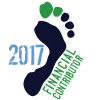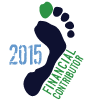PB Wrote 1, Did you attend
PB Wrote
1, Did you attend a pre Boston Marathon lecture by Dr Lieberman. A barefoot runner was there and asked Dr Lieberman a lot of questions. Dr Lieberman was unable to answer the questions so he had the runner come back to his lab to study his running. I am trying to find this barefoot runner and learn what were the questions he asked at the lecture.
>>>I was not that person.
2, Why did you start running barefoot.
>>>I was living in CA near Ken Bob and was barefoot a lot living near the beach. The only time I was not barefoot was when I was running. I never thought about running barefoot even though I would be barefoot everywhere else. This because people would be barefoot out and about and that was OK, but I never saw or heard about anyone running barefoot. I had on the beach barefoot run myself but the thought stopped there.
From 29-34 I ran in pain with shoes on not knowing about barefoot running. I really had bad knees that hurt and cracked. At 34 I stopped running and told myself to wait 6 months. After that I would run the beach barefoot for 5 minutes and then wait a few days and run 5 minutes. This was really slow putting up 5 more minutes or so a run. The pain did not come back and after 40 minutes a session and 2 months I decided to "test" the asphalt road behind the beach cottages and see if running on the pavement barefoot would stave off the knee pain as it had on the beach. My issue with this in 1997 was not my feet. It was being the 1st barefoot runner that I have ever seen, that being myself. I was very self conscious about this in 1997 as there were no other known barefoot runners anywhere that I had seen or heard of. I chose the beach alley as I could shyly duck in between the houses and the beach paths to make people think I was running to the beach and not on the road so as not to be a "weirdo". Running on the pavement took about a week or so to really get good and was never the issue. I did get several small blistewrs in the 1st few weeks but that was it. I was sold. COMPLETELY.
Sevreral months later I get an email from a one Ken Bob Saxton in nearby Huntington Beach saying that he wanted to get a beach run group started. This was fortuitous and a meeting of 2 barefoot runners amongst otherr curious runners. Ken and I became friensds and would run together at a running club and my shyness and self consciousness was changed yto confidence of being seen in the public. Ken taught me about getting over the mental stuff more than the art of barefoot running. Though he did give me some helpful pointers for sure. He helped me bring me out of a shell in public running barefoot. Not that it was really bad as it may sound, but I think in 1997 it was new. No Born to Run, no Dr. Lieberman, not a lot of Internet buzz, etc. Ken Bob and I were the only ones we knew of in the country at te time. He set up his website
www.therunningbarefoot.com in 1997 and the movement was born. Ken Bob really is the reason why barefoot running took off and I was right there with him. It kind of makes me #2.
3, What is your advice to a new barefoot runner
>>>Simple and WAY OVERLOOKED by most
Go barefoot more in your life.
If you show up to a workshop on and have anything on your feet, you have failed in my mind. One has to move about barefoot before they run as the body as to get used to barefoot movement. In addition, the feet have to get strong on the tops and have to develop a thin layer of leather. This will prevent pain/blisters when running for the 1st steps. The running aspect is easy. It comes naturally. It is the feet that need to get va thin layer of leather that is most important. This can not be achieved when people wear shoes all day and then just want to run barefoot. Even having a foot in a shoe all day creates over a pint of sweat and the foot gets moist and loses it's edge by not maintaining dry supple feet.
The next thing is start slow. Like I did on the beach. People should start really slow on the street. The street is the best place to start. NOT the beach or grass. The spring action is better on the hardest surface. The efficiency of driving on a road asphalt is better than dirt as a comparison.
Most people don't listen to their bodies/feet. Always prepare ahead of time by being barefoot more and keeping dry feet if that means wearing flip flops more when not able to be barefoot. Get the paper barefoot, rake the yard, think about reversing the need of a shoe. most people say I take off my shoes when...Think I have to put on a shoe when...
Everyone's running style is different as our bodies are all different. Run slow and relax feeling each step and the stride and see what works best for YOU. A basic method of front to rear of the foot/midfoot is good, but it can vary for each person.
Also reccomend videos from Harvard's barefoot running website and looking at others. In the end it is patience and dedication and getting your feet in shape.
Any more questions about this are welcome..
Preston
Cheers
PB















